Irrasshaimase!1 Thanks for reading the Conbini Boys Newsletter, where we feature the latest and greatest from Japan’s amazing convenience stores. If you enjoy the newsletter and podcast, consider becoming a paid subscriber. It’s just $5 per month, which is less than a typical conbini haul.
The onigiri (rice ball) was the conbini’s first killer app. It transformed 7-11 from a fledgling corner store into a colossal enterprise. Today, there are tens of thousands of conbini. In Tokyo, it’s common to see two or three conbini within a couple of hundred yards of one another. Their popularity is unrelenting. But when 7-11 first opened in Japan in 1974 it was not an immediate success. The onigiri changed everything.
What is an onigiri? It’s a ball of rice typically stuffed with pickled plum (umeboshi), seaweed (kombu), fish, or meat. Moms all across Japan make them for quick snacks and bento lunches. They’re easy to make but difficult to master. A few tricks of the trade include: 1) wet your hands so the rice doesn’t stick; and 2) lightly salt your wet hands so they season the rice as you shape it. They are excellent treats, and I am baffled why they have not caught fire in the US. The war on carbohydrates may have obliterated its chances.
The conbini is the source of many retail and food production innovations and the onigiri required several. For instance, 7-11 pioneered open refrigeration. When a consumer shops for an onigiri there is no door separating her from the product as there is for beverages. It’s a free display allowing customers to easily browse and grab the flavors they like. Second, onigiri are commonly wrapped in nori, but the nori goes soggy if allowed to sit against warm rice for too long. 7-11 invented the “parachute” wrap, which separates the nori from the rice but magically brings them together when unwrapping. To give a homemade feel to the mass-produced onigiri, 7-11 puffs a blast of air into the stamped rice to make it lighter and fluffier. Here’s a video of an onigiri mascot observing the trick at an onigiri factory:
Thanks to these innovations, the onigiri is the conbini’s most popular item. It sells millions every day. Check out Gavin Whitelaw’s paper, Rice Ball Rivalries, for a fascinating history of onigiri at the conbini.
But innovation can go too far. And New Days is taking things way too far with its Sugo-Oni series. The name is a bit of a puzzle. “Sugo” is short for “sugoi”, which means “awesome” or “incredible”. “Oni” is short for “onigiri”, but on its own means demon, an apt name for these monstrosities. Consequently, its emblem is a demonic rice ball.
Sugo-Oni takes two forms: stuffing an entire meal genre into a rice ball or transforming a meal that has nothing to do with rice balls into a rice ball.
New Days began the series in June 2021 with the Noriben Sugo-Oni. It managed to fit an entire bento into a folded slab of rice. That nori is holding on for dear life to contain: fried white fish, fish cake, tartar sauce, karaage fried chicken, yaki tamago egg, and simmered julienned vegetables. It’s reminiscent of the first cell phones marketed as a portable convenience but actually a massive brick that made its user look dimwitted.
Unsatisfied with conquering lunch, New Days turned to breakfast just four months later with the Double Tsukune and Runny Egg Sugo-Oni. Tsukune are chicken meatballs. New Days turned them into patties to sandwich the egg. The rice is an afterthought, a mere platform for the messy sandwich sitting on top of it. It’s like the husband who signed his wife up for a swingers evening thinking he’d be the star of the show but ultimately was left sitting pantsless on a ratty sofa while two strangers nailed his soulmate in a nasty threesome that didn’t look anything like the Pornhub fantasy he had in his head.
When the Sugo-Oni diaries are finally revealed, we’ll inevitably learn that a mix of acid and potent weed played a crucial role in product development. How else can you explain the Konomono Burger Sugo-Oni? Konomono roughly means “flour-based food”. There’s ham-katsu (ham cutlet fried in panko), takoyaki (octopus balls cooked in batter); and yakisoba (stir-fried noodles). The product development team must have a poster of Dr. Atkins stamped with a giant “FUCK YOU” in blood red font.
Some Sugo-Oni have a more elegant look. For instance, the Simmered Scallop Sugo-Oni is simply three scallops with seasoned rice wrapped in nori. Then there is the Ham and Cheese Sugo-Oni, which is thinly sliced ham wrapped tightly around rice and finished with a dollop of herbed cream cheese.
Perhaps the greatest Sugo-Oni is the Tonkotsu Ramen Sugo-Oni. This thing has ramen noodles, chashu pork, soft-boiled egg, fishcake, bamboo shoots, and cabbage. But the pièce de résistance is the rice, which is cooked in a pork broth to mimic the flavor of tonkotsu ramen. Of all the types of ramen – miso, soy sauce, salt – of course they picked tonkotsu! The Sugo-Oni is not interested in some mild, lightly seasoned soup. It craves a bubbling cauldron of pork back fat ooze that will run through your GI tract faster than a lubed up toddler crashing down a Slip N Slide.
The latest Sugo-Oni is the Yakiniku Ben or the Grilled Meat Bento Sugo-Oni. This is relatively tame with just beef brisket and ground beef lathered in gochuchang, mixed with pickled vegetables, topped with pumpkin. Were I to transform the 30-odd Sugo-Oni into a multi-course meal, this would be the amuse bouche.
For a complete look at the Sugo-Oni series, check out food-mania.jp.
Item of the Week
I hesitate to bestow this honor on such a dangerous item, but the Chantaile Pineapple Sparkling Wine from FamilyMart looks spectacular. What could be better at the end of a long day at work with Japan’s humid summer crushing down on you than an ice cold can of this.
But beware! It’s 8.5% alcohol, which is Strong Zero territory. I reckon this will leave many blacked-out bodies in its wake. Drink with caution!
From the Dumpster
FamilyMart is releasing a Spam and Cheese Toastie. It’s hard to find any redeeming qualities, especially after learning it’s slathered in mayonnaise. Japan in July is somewhere between a Turkish sauna and the Fifth Circle of Hell. A piping hot toastie with cheese spitting like lava and greasy spam is not what you need when sweat is soaking through your underwear.
Lawson has somehow topped FamilyMart with its own bread-based abomination: the ketchup and mayonnaise bread. I can imagine only one scenario where this food makes any sense. A caller with an 84-month car loan, $100,000 of student loans, $12,000 of credit card debt has phoned the Dave Ramsey show to ask whether he can afford a boat, and Dave tells him not only can he not afford a new boat but he can only afford to eat ketchup and mayonnaise bread for the next seven years to achieve financial stability.
Conbini Haiku
Stuffed demon rice ball
Sloppy, stupid, makes a mess
Stop Sugo Oni
From the Stacks
Here are some Substacks I am enjoying:
- is an author based in Japan, who writes wonderful short stories.
- by is fabulous look into Japan’s music scene.
- by is where I turn when I want to cook good food simply.
- is what I wish I had read before my first and only visit to Paris. This should be required reading to avoid Paris Syndrome.
Get More Hot Conbini Action
That wraps up this week’s newsletter. Keep in touch with all your conbini needs through:
🐥❤️Spread the conbini love ❤️🐥
Irasshaimase means “Welcome!” in Japanese. Retail and hospitality workers commonly yell it when a customer enters a store or restaurant.




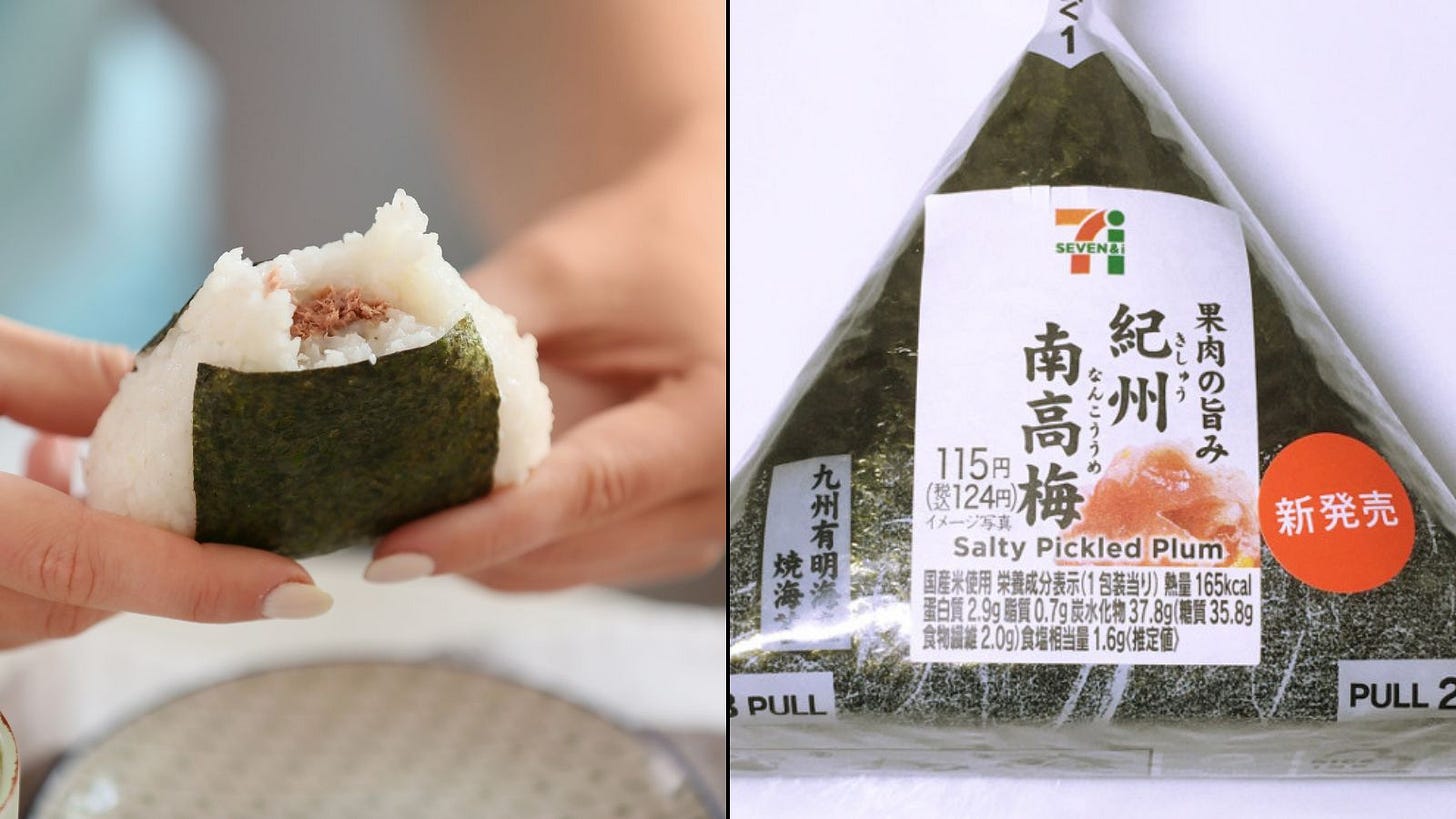
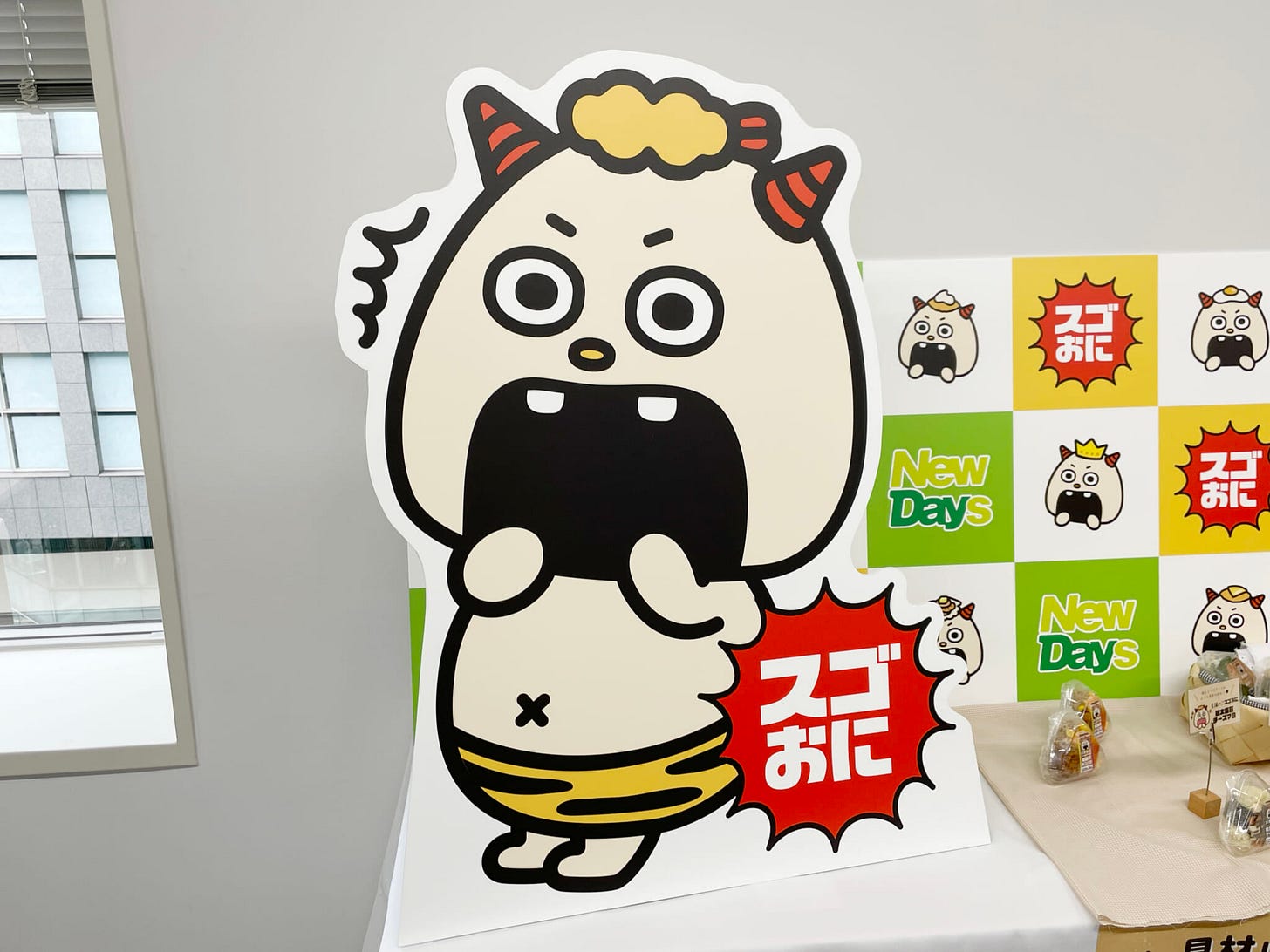

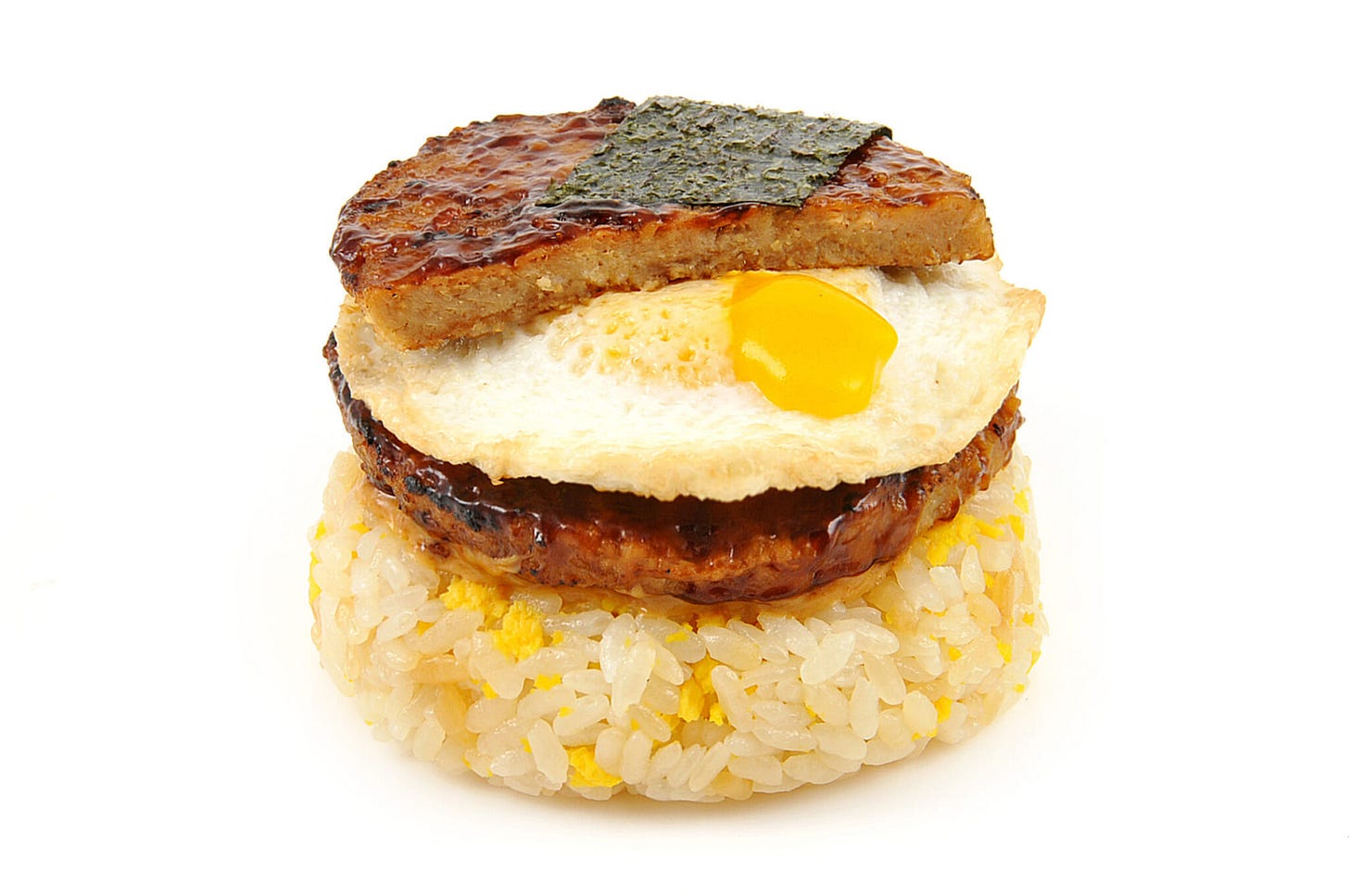
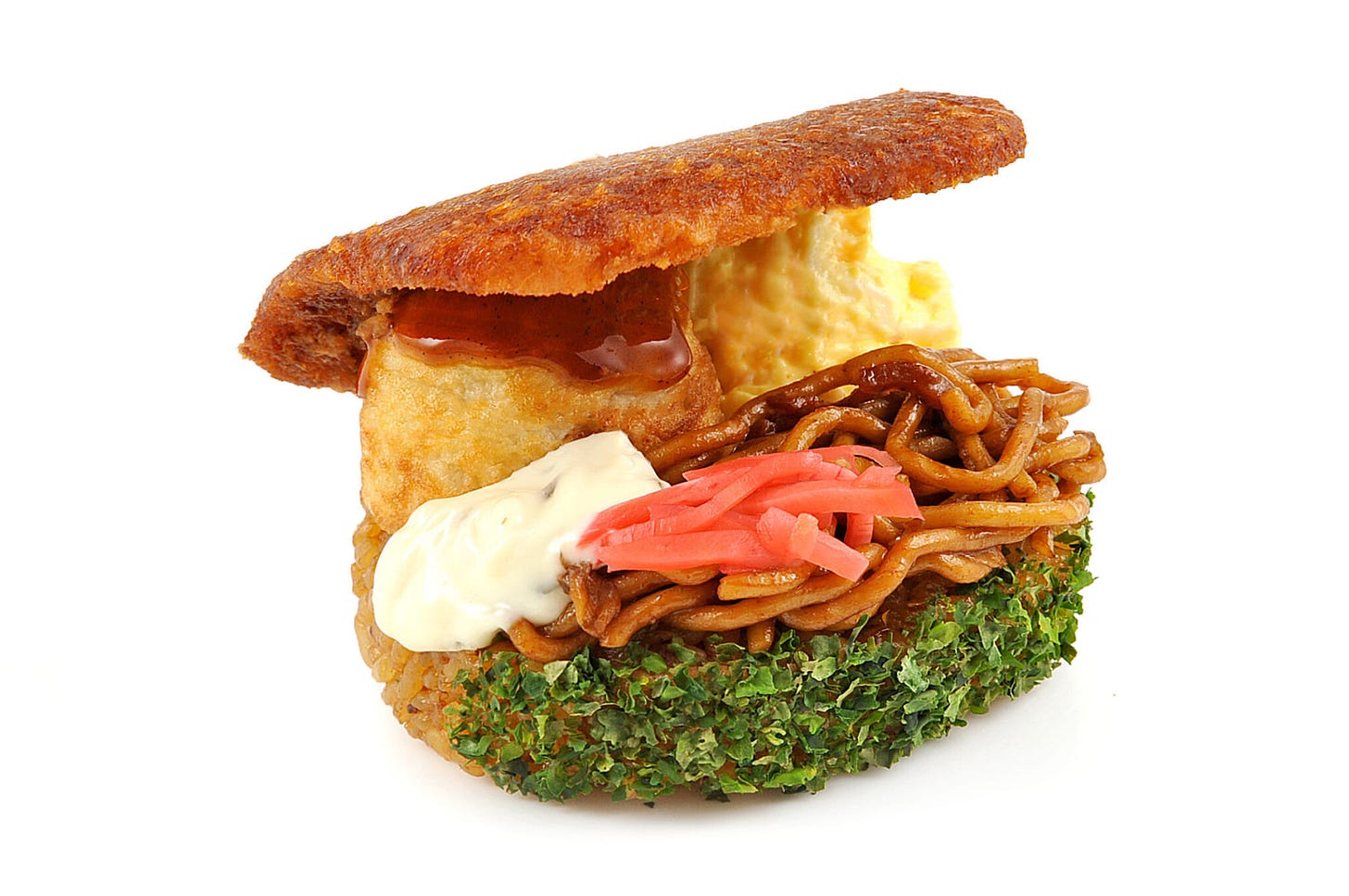
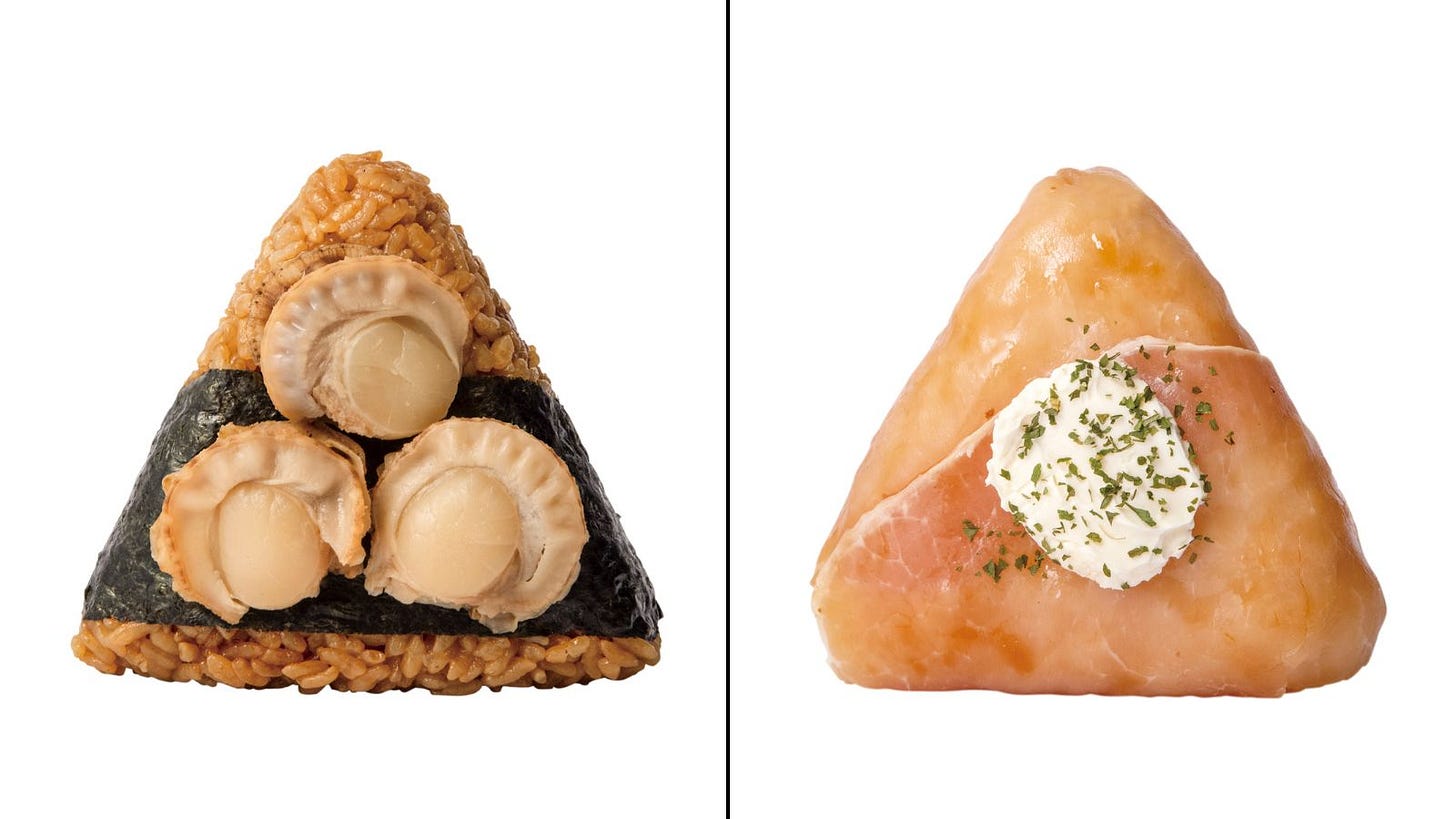
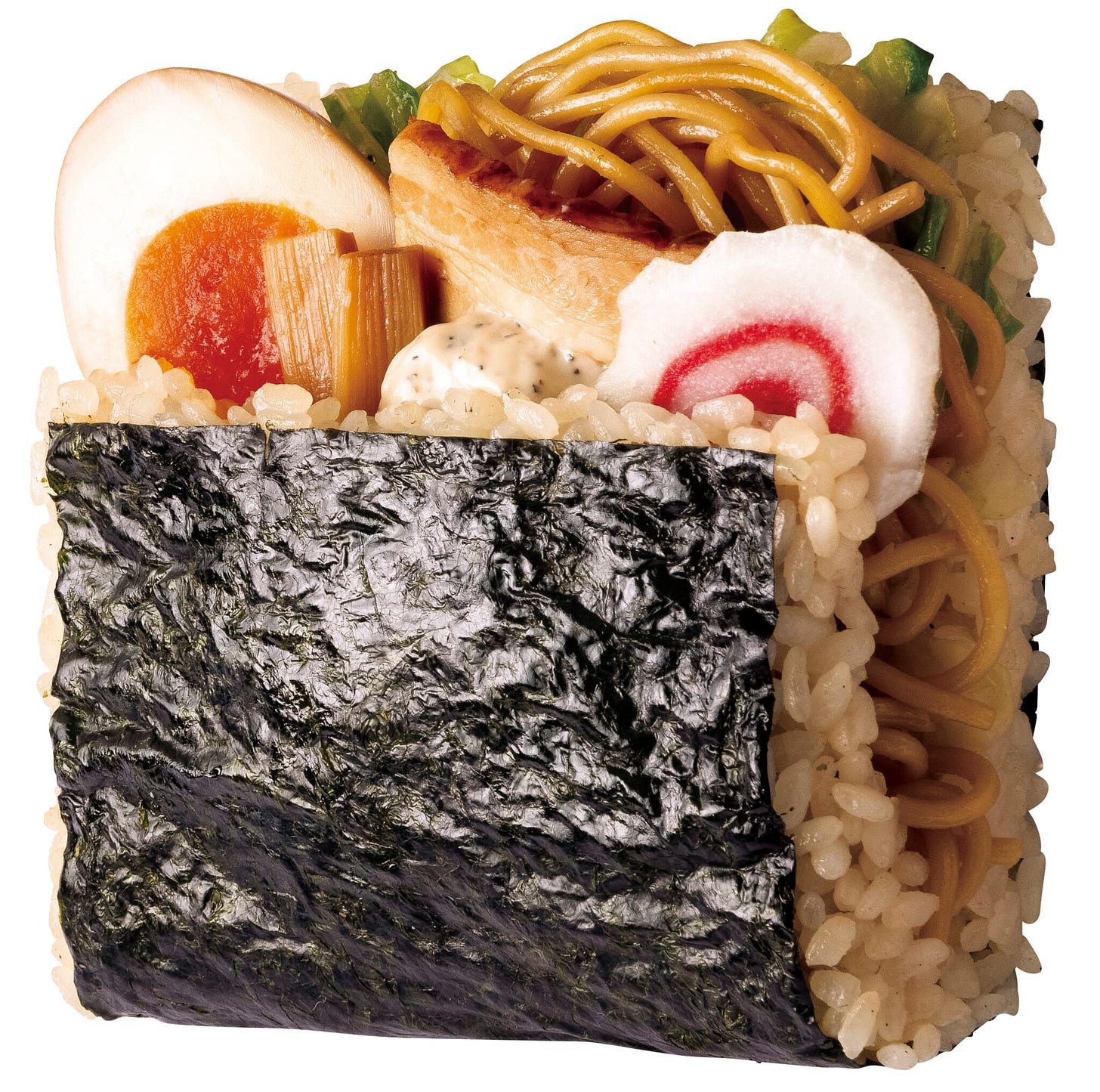
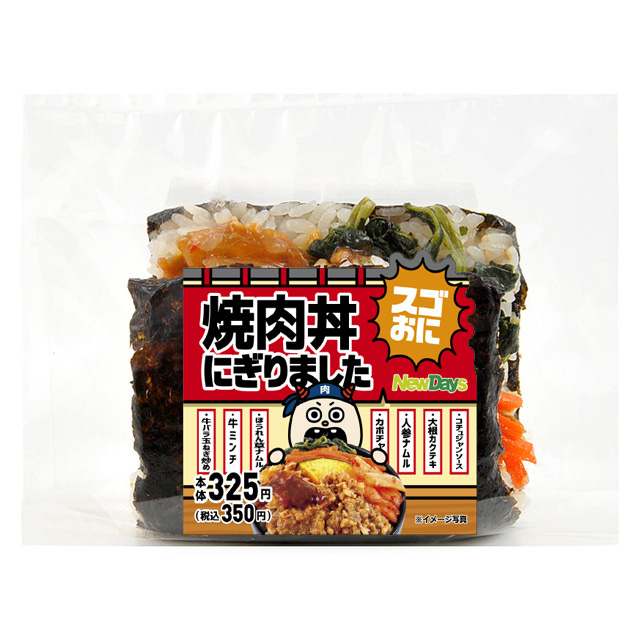
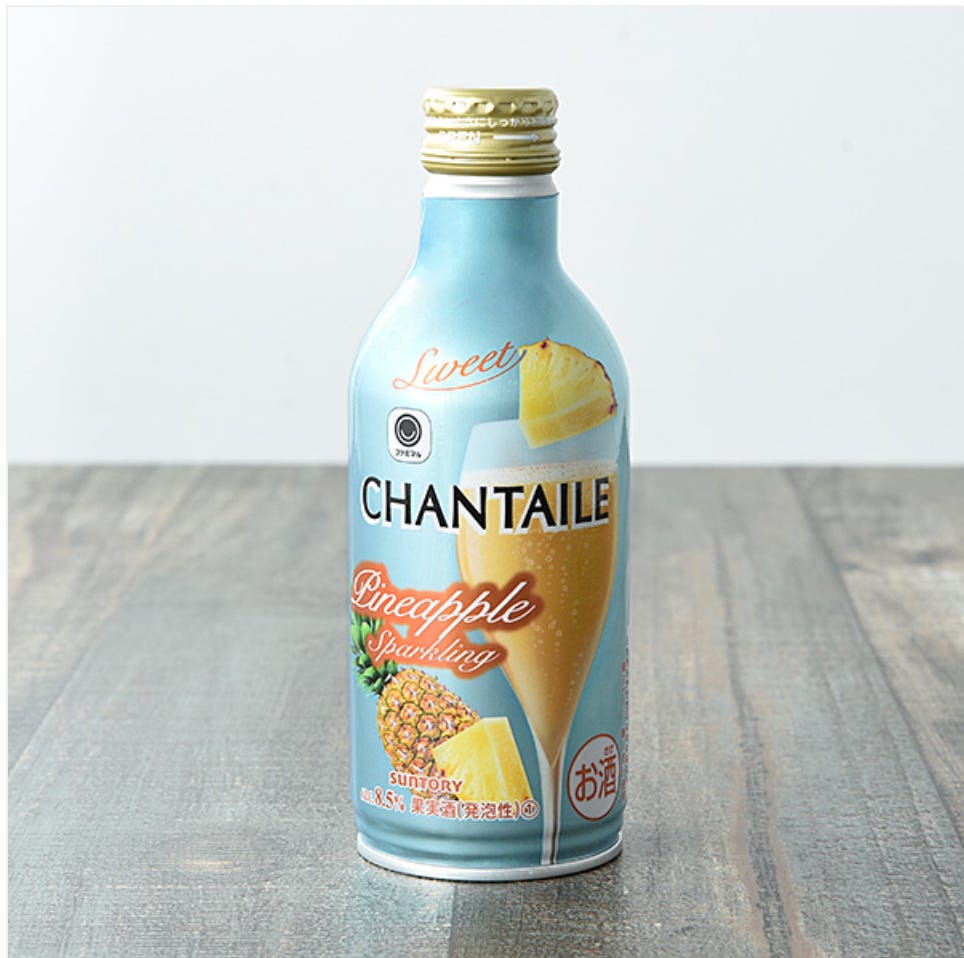


These things feel like something I would buy without hesitation if I’m in Japan, because that’s the freaky version of the onigiri I would definitely also buy. Even if it’s monstrously bad, the experience will probably make up for it.
Thanks for the shout out!